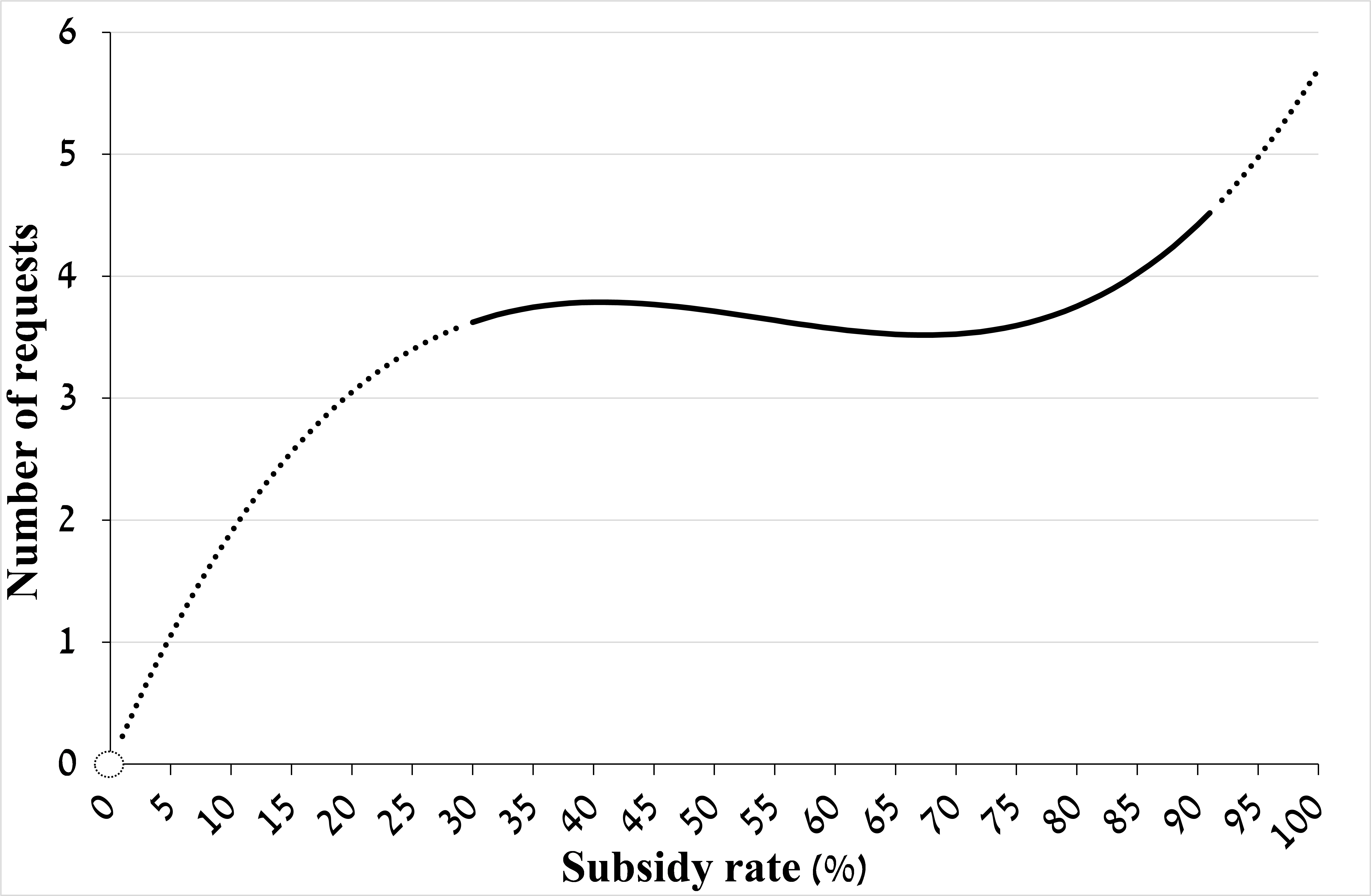 · Full research (Hebrew)
· Full research (Hebrew)
· A one percentage-point increase in the subsidy rate in 2006–15 increased the number of requests for land in that industrial area by 1.6 percent, on average, the number of approved requests by a similar rate, and the requested area by 1.0 percent.
· In the range of approximately 30 to 80 percent subsidy, increasing the subsidy rate does not affect the number of requests, while in the range above that, the effect increases by a rising rate.
· The subsidy’s effect is stronger in the north of the country and in large industrial areas, and no difference was found in the subsidy’s contribution to demand for land between industrial areas in Jewish or Arab localities.
The Ministry of Economy and Industry’s Industrial Area Administration subsidizes land development costs for 66 industrial areas under its responsibility that are in the periphery, in order to encourage economic activity there. In 2006–15 the subsidy rates were between 30 and 91 percent (61 percent on average, which is approximately NIS 190,000 per dunam) totaling NIS 0.8 billion.
Research conducted by Bank of Israel Research Department economists Noam Zussman and Gilad Shalom examined the subsidy rates’ effect on entrepreneurs’ demand for land, by utilizing the noted changes in subsidy rates in many industrial areas over the years and the changes over a given timeframe in the subsidization rates among the industrial areas, including those near to each other. The research relied primarily on administrative data from the Ministry of Economy and Industry and the Israel Land Administration.
The results of the research indicate that an increase of one percentage point in the subsidy rate for land development costs in an industrial area increases the number of entrepreneurs’ requests for land in that area by 1.6 percent and the size of the requested area by 1.0 percent. The subsidy rates do not have a uniform effect on demand for land: in the range of approximately 30 to 80 percent subsidy, increasing the subsidy rate does not impact on the number of requests, while in a higher range of subsidy it increases at a rising pace (see figure).
The subsidy’s effect in industrial areas in the north of the country and in large industrial areas is stronger than in industrial areas in the south of the country and at smaller ones. No difference was found in the subsidy’s effect between industrial areas in Jewish or Arab localities. An increase of one percentage point in the subsidy rate increases the number of approved requests by 1.8 percent, similar to the growth rate of the number of requests, a finding that may indicate that the quality of the requests did not deteriorate with the increase in the demand for land.
It should be emphasized that due to data limitations, the research cannot answer the main policy question: does an increase in subsidy rates for land in the periphery lead to a shift of new factories from the center of the country to there.
|
Rate of Subsidy of Land Development Costs in Industrial Areas and the Number of Requests for Landa, 2006–15 |
 |
|
aDotted lines indicate subsidy rates that do not exist. The number of requests at a subsidy rate of 0 percent is not certain. SOURCE: Ministry of Economy and Industry data and authors’ processing. |